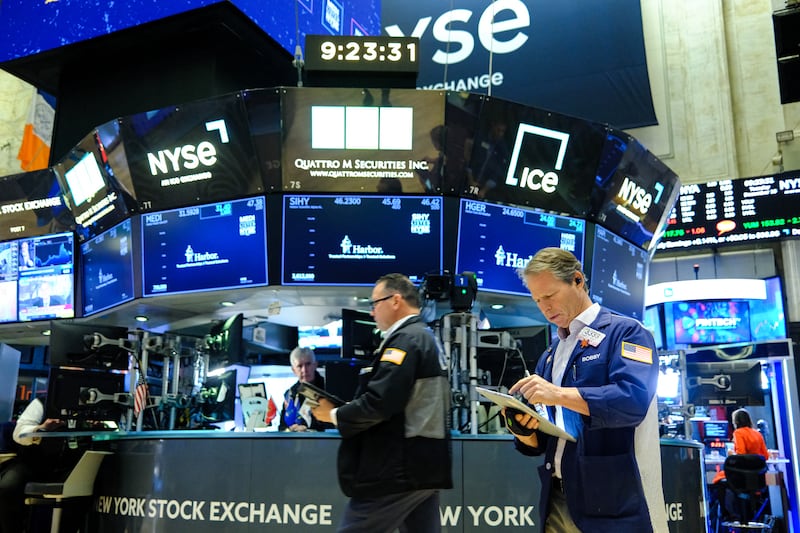You probably don’t think too often about superglue, at least until you drop someone’s favourite coffee cup and have to go rooting in the kitchen drawers to find a small tube of something to stick it back together. There’s a long-held tall tale that the product was originally developed by the military to quickly close up wounds in battle when it would be too slow and dangerous to stitch someone up. Not quite, as it turns out.
In Tallaght, you’ll find the Irish arm of Henkel, the German chemical and consumer goods giant that has been operating in Ireland since 1966. While the Tallaght site and a second one in Ballyfermot are factories, producing between them more than 2,000 tonnes of adhesives every year, there is also a significant research and development centre nestled in a corner of the Tallaght facility.
From here, Henkel scientists and engineers work not merely on new formulas for sticking things together, but also on finding ways to patch global teams of researchers together digitally.
Before getting into that, though, I had to find someone to confirm or deny the wound-suture story.
READ MORE
“Not quite,” was the response of Ruth Kelly, Henkel’s global head of product development. “You’re right in that it was eventually used for that purpose, but actually – as with so many discoveries – superglue was found by accident.
“Engineers were trying to find a quick-drying polymer to make sights for army rifles and when they used one particular formulation and let it set in the optics testing machinery, it pulled the delicate instruments apart when they tested it. So they tried again and the same thing happened, and at that point they started to realise that maybe they were on to something ...”
Something big, as it turns out.
Henkel is a global company. Headquartered in Düsseldorf and with international centres in Shanghai and Stamford, Connecticut in the US, not to mention research and manufacturing centres dotted around the world, it has global turnover of €21.5 billion and, most recently, made a profit of €2.6 billion. And the research and development centre in Tallaght is crucial to that success.
You might be thinking that superglue is not a product which currently requires much innovation. That’s to underestimate the chemical complexity involved. Superglue has to evolve constantly in line with the preferences and needs of both consumers and industry.
And different tasks need different glues. The Tallaght facility has helped to develop incredibly strong anaerobic glues that are used to bond metal to metal, and which can be found in engineering projects as diverse as the chassis of a lightweight sports car and the bearings of a global underground tunnel drill.
Development and innovation are key. As industry’s requirements shift, Henkel has to come up with new compositions. If consumer trends change, ditto. And in a world increasingly focused on sustainability, there is also the need to come up with formulations for superglue that can use more natural materials, relying less on heavy duty chemicals.
To help with all of this, Henkel has developed the lab digitalisation project. This is an online system that connects all of the group’s worldwide research and development sites, designed to streamline and speed up Henkel’s efforts to keep up with changing trends and demands. .
That sounds pretty basic (haven’t we all been doing something similar on Zoom since 2020?) but the lab digitalisation project – in which the Dublin lab was heavily involved – encompasses far more. Gavin Haberlin, Henkel’s scientific principal for adhesives in Dublin, showed me the system.
“For instance, Dublin is a centre of excellence for our anaerobic products, but we have India, China, Brazil, North America, Costa Rica and so on. Plus you have an added complexity that raw material suppliers might be different for each lab, meaning that you get a slightly different mix.
“So we set up a project which everyone can try out and maybe one location, say China, finds they get a different viscosity. So they can pass on their data directly to everyone else involved. We’ll take that on in Dublin and try it out, and then we’ll pass it on to Costa Rica. So we’re sharing and collaborating in real time.”
Not only in real time, but across time. As the world turns ever eastward, an experiment can begin in China at dawn, pass on to India as lunchtime nears, on to Dublin as morning breaks over Tallaght, and then be passed across to the US, Brazil, and Costa Rica later in the day.
The lab’s cleverness lies in the complexity that’s sitting beneath the simple act of communication. Yes, the scientists and engineers can gather around the virtual table and compare notes but, with a few clicks, not only can the precise recipe for each new experiment be passed along, but also the system instantly interrogates the supply and storage set-ups at each lab, ensuring that as soon as the doors open and the lights come on in each location, the right ingredients are available and ready to go so that experiments and development work can continue unabated.
It is not just about supply and communication, either. The lab digitalisation project can help propagate new ideas.
As Haberlin explains: “One of our ingredients is currently under threat, where suppliers may not be able to produce enough any more, and I was looking for alternatives. I was talking to a company that uses the pits from olives, ground up, and they told me that Henkel was actually already using their product.
“I wasn’t aware of that, so I looked on the lab digitalisation system and there it was – it was already being used in our lab in Düsseldorf, and so we were able to start developing around it. Without this system, it could have taken months or even years for that information to filter through.”
It’s that kind of innovation, together with efforts to use more recycled and recyclable packaging, that has allowed Henkel’s Dublin lab to drive a 61 per cent reduction in carbon dioxide emissions across the group’s global operations.
The next time you need to stick a coffee cup back together, bear in mind that the sticky stuff is way more complex than you might think.
- Sign up for Business push alerts and have the best news, analysis and comment delivered directly to your phone
- Find The Irish Times on WhatsApp and stay up to date
- Our Inside Business podcast is published weekly – Find the latest episode here





















